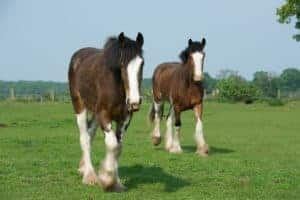Teasing Mares

In very small breeding operations, the teasing can be done with the breeding stallion, but this is a sure way to develop a frustrated horse which is difficult to handle and can become rank and overly aggressive. Needed is a teasing stallion that is aggressive, but not abusive to mares. Teasers range from ponies to full-size stallions of varying breeds. The good teaser is a male that will “talk” to mares.
Edward L. Squires, PhD, of Colorado State University, underlines the importance of teasing when he states:
“Inadequate or improper teasing constitutes a major cause of poor reproduction performance in the mares. Normally, cycling mares should be teased daily with at least one stallion. Mares that have not achieved normal cycles and mares exhibiting the first day of diestrus should be teased with two stallions. The mare should be teased by the stallion head to head, at the buttocks, and at the external genitalia
Create a free account with TheHorse.com to view this content.
TheHorse.com is home to thousands of free articles about horse health care. In order to access some of our exclusive free content, you must be signed into TheHorse.com.
Start your free account today!
Already have an account?
and continue reading.

Related Articles
Stay on top of the most recent Horse Health news with

















